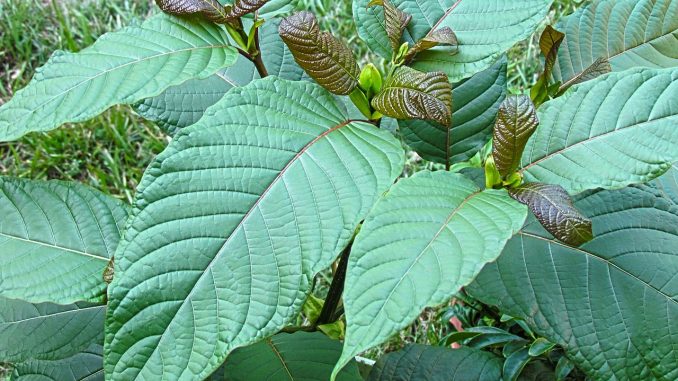
CARRBORO — On a sunny November afternoon, a steady stream of customers walks through the doors of a Carrboro cafe called Oasis for a cup of an increasingly popular herbal beverage. The menu offers coffee, black tea, beer, wine and pastries, but nearly everyone opts for a $5 mug of kratom (pronounced KRAY-dum).
A powder ground from the leaves of an indigenous Southeast Asian tree related to the coffee plant, kratom (Mitragyna speciosa) offers pain relief and mood enhancement, similar to prescription painkillers.
Advocates say the substance could help reduce the nation’s reliance on highly addictive and often deadly prescription painkillers. Some addiction experts also argue the plant could be used as an alternative to methadone, buprenorphine and Vivitrol in medication-assisted therapy for opioid addiction.
Used for centuries to fight fatigue, pain and anxiety in Indonesia, Malaysia, Myanmar, Papua New Guinea and Thailand, kratom was rarely taken in the United States until recently.
Now, with growing concerns about the dangers of prescription painkillers, an estimated 3 to 5 million people are using kratom and reporting positive results, based on information from retailers.
But worries that the unregulated plant product could be abused for its mild euphoric qualities and users could become addicted are spurring federal officials to issue public health warnings — and a handful of states and cities to impose bans.
North Carolina is among several states to have considered a study or ban on the plant product, including Florida, Kentucky, New Hampshire, New Jersey and New York.
Alabama, Arkansas, Indiana, Tennessee, Vermont, Wisconsin and the District of Columbia have already banned kratom, along with at least three cities — Denver, San Diego and Sarasota, Fla. Sen. Tom McInnis (R-Scotland) filed legislation to add kratom to the Schedule 1 controlled substance list, and the N.C. House filed a measure to study kratom’s effects and availability, but neither measure was passed into law.
The Drug Enforcement Administration last year said it intended to classify the herbal supplement as an illegal Schedule 1 drug, along with heroin, LSD and marijuana. But after public demonstrations, letters from Congress and a petition with more than 142,000 signatures, the agency put the proposal on hold.
Last month, Food and Drug Administration chief Scott Gottlieb issued a public health warning, citing 36 deaths in which kratom was present, but not necessarily the cause. About 50,000 Americans die of drug overdoses each year. In addition, the FDA, which has been seizing imports of kratom at U.S. ports since 2013, stepped up import enforcement.
The agency also cited a 10-fold increase in kratom-related calls to poison centers between 2010 and 2015 — from 26 calls to 263, out of roughly 2.2 million calls a year. And Gottlieb warned about the unknown risks of using kratom to treat opioid addiction, saying he fears some kratom may have been laced with opioids, and that the FDA needs to conduct more study on the plant’s potential benefits.
Oasis owner Robert Roskind says the controversy has only improved business by focusing attention on what he says is still a little-known plant with huge benefits and few drawbacks.
“Except for the rare upset stomach or lightheadedness, it has helped nearly everyone,” he said. “And it’s cheap. I have about 300 customers and most come here several times a week. Some buy take-home packages.”
A group of UNC Chapel Hill students sit on floor pillows in a corner, reading and working on laptops. Kratom sharpens their focus when they need to study for an exam, one student said. “It’s like coffee without the jitters.”
Bob Whyte, a well-dressed 80-year-old businessman from Chapel Hill, stands out. A self-described straight-laced “boy scout,” he said he’s been drinking kratom three times a day to relieve severe back pain from failed surgery.
“I’d been taking tramadol and hydrocodone consistently for two years when I found out about kratom,” he said. Whyte said his doctors didn’t want him to keep taking the highly addictive prescription painkillers, and they had no objections when he told them he was switching to kratom.
The American Society of Addiction Medicine said that the plant’s primary active ingredients, mitragynine and 7-hydroxymitragynine, should be researched for their pain relief and addiction treatment potential, but also argued in comments to the DEA last year that the whole botanical product, like the powder sold at Oasis, should be made illegal.



